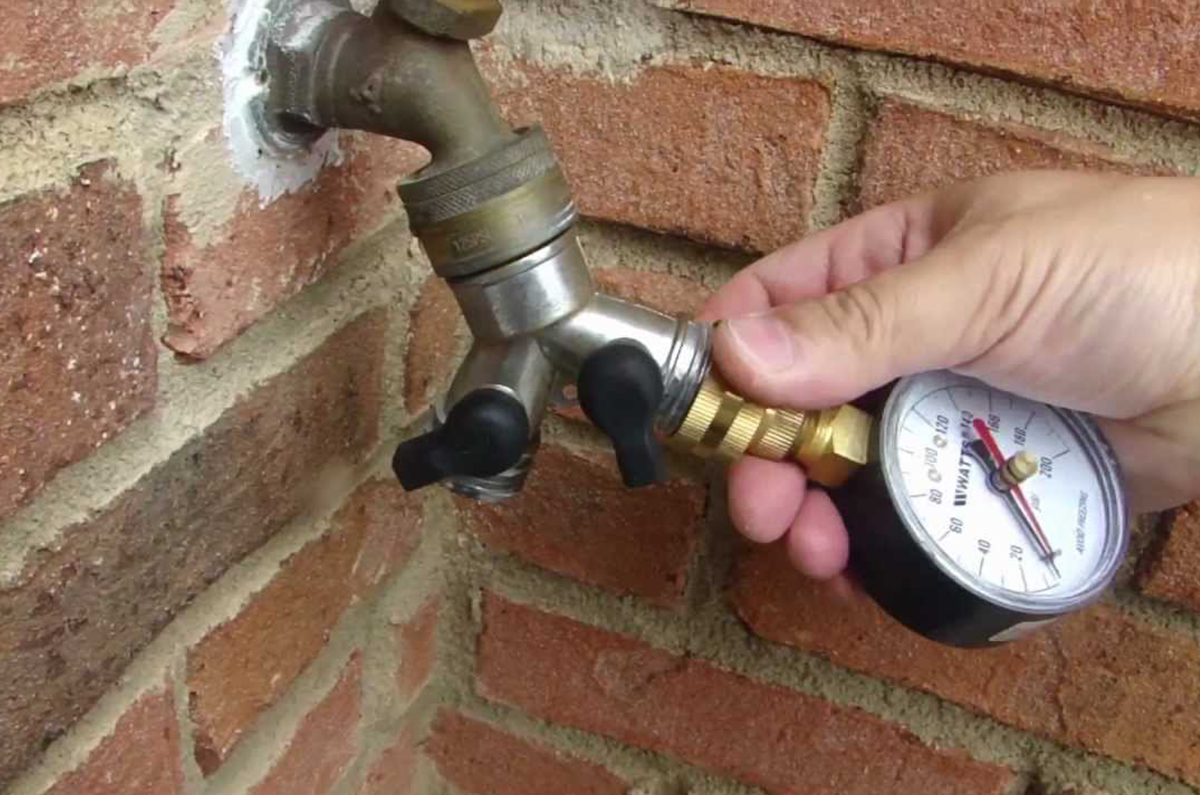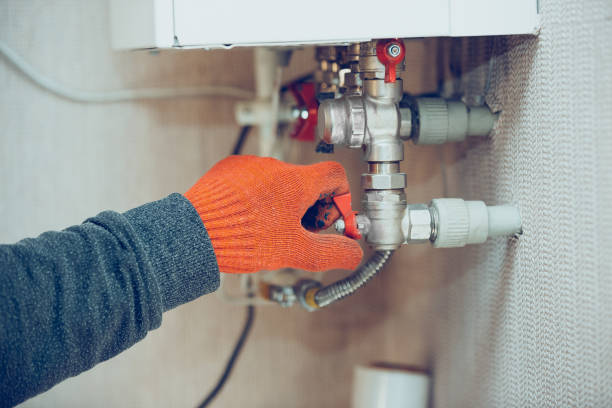Recommended Approaches for Fixing Low Water Pressure in Your Home
Recommended Approaches for Fixing Low Water Pressure in Your Home
Blog Article
This great article directly below on the subject of Low Water Pressure in the House? is unquestionably intriguing. Read it for yourself and see what you think of it.

Low tide stress in your home can be an irritating problem, influencing every little thing from showering to cleaning dishes. If you're experiencing weak water flow, there are a number of feasible reasons and solutions to check out. In this guide, we'll talk about usual reasons for low tide pressure and functional steps to address the problem efficiently.
Intro to Low Tide Stress
Low water pressure happens when the circulation of water from your taps, showers, and other fixtures is weaker than normal. This can make day-to-day jobs more difficult and less effective. Recognizing the causes of low tide stress is essential to discovering the best option.
Usual Causes of Low Tide Stress
Faulty Pressure Regulators
Pressure regulators are responsible for keeping consistent water pressure in your house. If they malfunction, it can lead to low water pressure or irregular flow throughout your house.
Local Water System Issues
In some cases, the trouble lies outside your home. Local water supply concerns, such as main line leakages or maintenance job, can momentarily decrease water pressure in your area.
Pipe Obstructions
Gradually, pipes can end up being obstructed with natural resource, sediment, or particles, limiting the flow of water. This is a typical issue in older homes with galvanized steel pipelines.
Deterioration
Rust within pipelines can cause leaks and lowered water stress. Rust build-up can tighten water flow, especially in maturing plumbing systems.
How to Detect Low Water Pressure
Examining Pipelines
Check noticeable pipes for indicators of leakages, rust, or clogs. Focus on any unusual noises, such as knocking or rattling pipelines, which can indicate issues within the plumbing system.
Consulting with a Plumber
If you're not able to pinpoint the cause of low tide pressure, think about employing a professional plumber to conduct a thorough assessment. They can determine underlying problems and advise ideal solutions.
Examining Taps and Fixtures
Beginning by examining the water pressure at various faucets and components throughout your home. If the problem is separated to particular locations, it may suggest local issues.
Do It Yourself Solutions to Repair Low Tide Stress
Flushing Water Heater
Sediment build-up in the hot water heater can restrict flow and minimize effectiveness. Purging the tank occasionally aids get rid of sediment and preserve ideal performance.
Inspecting Pressure Regulator
Make sure that the stress regulatory authority is operating appropriately. Changing or replacing the regulator can aid recover appropriate water stress throughout your home.
Cleaning Up Aerators and Showerheads
Mineral deposits can gather in aerators and showerheads, reducing water flow. Get rid of and clean up these parts routinely to boost water pressure.
Cleaning Clogs in Piping
For minor blockages, try making use of a plumbing serpent or chemical drainpipe cleaner to clear blockages in pipelines. Beware when utilizing chemicals and comply with security guidelines.
When to Call an Expert Plumber
If do it yourself efforts stop working to fix the concern or if you presume significant plumbing problems, it's ideal to seek support from a qualified plumber. They have the proficiency and devices to address intricate problems safely and efficiently.
Preventive Measures to Maintain Water Pressure
Installing a Pressure Booster
Think about setting up a stress booster pump to enhance water pressure in locations with constantly reduced circulation. This can be specifically helpful for multi-story homes or residential or commercial properties with high-demand components.
Monitoring Water Usage
Be mindful of water usage behaviors and avoid overtaxing the plumbing system. Straightforward changes, such as incredible showers and washing loads, can assist maintain adequate water pressure.
Regular Maintenance
Arrange routine maintenance for your plumbing system to avoid issues such as rust, leaks, and obstructions. Dealing with small problems early can aid avoid even more significant fixings in the future.
Conclusion
Managing low water pressure can be discouraging, but determining the underlying causes and carrying out appropriate services can recover optimal circulation throughout your home. Whether it's cleaning aerators, evaluating pipelines, or speaking with a plumber, taking proactive actions can ensure a steady supply of water for your day-to-day demands.
FOUR WAYS TO FIX LOW WATER PRESSURE NOW
Turning on a shower or faucet only to find the water comes out in a sad, slow drizzle is never a good feeling. How exactly are you supposed to wash a pan or take a quick shower when it takes 10 minutes just to rinse off a little soap? The good news is that when your water pressure is bad, there's always a cause: typically one that can be easily fixed. Here are some of the most common causes of low pressure and what you can do to fix the issue:
DEBRIS AND MINERAL DEPOSIT BUILDUPS
If you notice low water pressure from just one or two of the fixtures in your house, the problem likely has to do with debris buildup. Water is full of minerals and other debris, all of which can accumulate in your pipes and on your fixtures. This can cause a blockage that affects how much water flows through. To fix this, try filling a small plastic bag with white vinegar, and use a rubber band to hang it around your showerhead or faucet. Let the head of the fixture soak for a few hours, and the vinegar should loosen the deposits.
WATER LEAKS
Leaks are another common cause of low water pressure. If water is flowing out of your plumbing through a hole or crack before it can reach your fixture, the pressure coming out of the faucet or showerhead will be lower. A plumbing professional is your best bet for finding and repairing a leak in your water supply pipes.
Leaks are another common cause of low water pressure. If water is flowing out of your plumbing through a hole or crack before it can reach your fixture, the pressure coming out of the faucet or showerhead will be lower. A plumbing professional is your best bet for finding and repairing a leak in your water supply pipes.
A VALVE ISSUE
If you have low water pressure throughout your home, check your main shut-off valve to make sure it's completely open. You may also want to see if there's a pressure-reducing valve installed. If there is, have a plumber help you adjust the settings to get the pressure you're looking for.
OTHERS USING WATER
Believe it or not, your low water pressure could be caused by your neighbors. If you notice low pressure at certain times of day, it may be because you and the people living next to you have similar schedules - when everyone is showering at the same time, the pressure will be lower in every home. Low pressure throughout the neighborhood may also be caused by an issue with your municipal water supply. If that's the case, call the supplier to see if they're working on the issue.
https://www.rotorooter.com/blog/water-leaking/low-water-pressure-fixes/

As a passionate person who reads on 4 Ways to Troubleshoot Low Water Pressure, I imagined sharing that excerpt was a smart idea. Sharing is caring. Helping others is fun. I am grateful for your time. Kindly come visit our site back soon.
Click Here To Read More Report this page